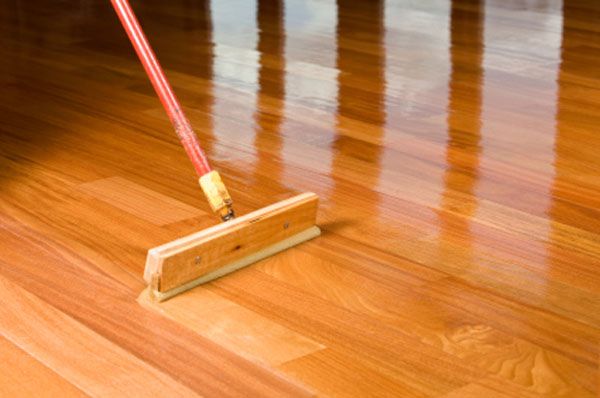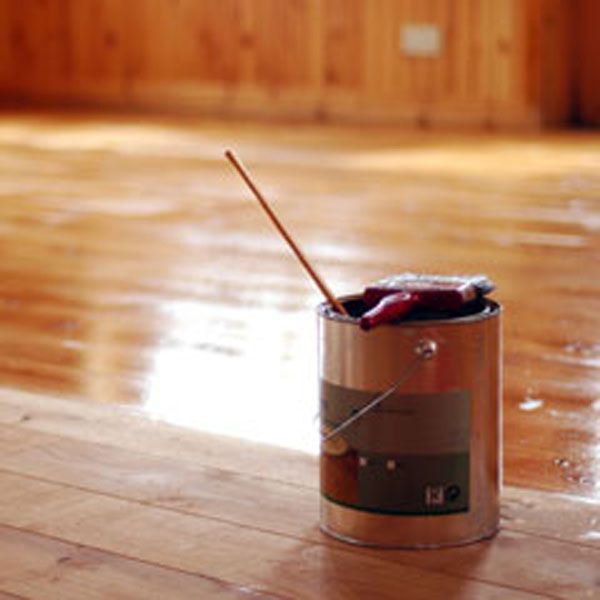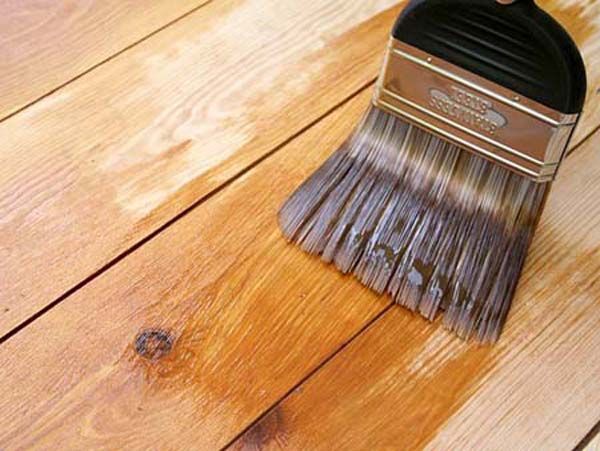
.
wooden flooringPart IV – The Varnishes
In this article we will talk about the different types of varnishes for wooden floors.
The most appropriate product should be used in each case, taking into account the use and location of each floor.
Varnishes are surface finish products. Their fundamental characteristics, in addition to aesthetics, are hardness, resistance to abrasion and resistance to certain household products.

The varnish is classified according to the dominant resin of the compound.
There are basically four classes of varnishes:
Urea-formaldehyde: They are the most used and can be presented in hydroalcoholic solution or in organic solvent. In general, they give rise to matte, resistant and hard finishes.
They have the drawback that they become brittle over time.
Those of hydroalcoholic solution They are very hard and adhere well to wood, but they have low impact and puncture resistance.
They are sensitive to water and household products. They are difficult to renew, having to apply successive layers spaced four hours apart.

The organic solvent they are softer but more resistant to shock. They are also more water resistant and require less time between coats.
Polyurethane: On the other hand, polyurethane varnishes are more flexible, adapt better to irregularities in the installation and give a glossier finish. They have good mechanical resistance and resistance to household products. Its price is higher and its drying is slow.
Water-phase acrylic-based varnishes: These are essentially acrylic polyurethanes. They are still not widely used and their biggest problem is that they raise the wood grain (repelling occurs). To avoid this, either an organic solvent primer or a very thin, fast-drying primer is applied before the final coat.
Factory applied varnishes: With the extension of floating parquet, the application of varnishes in the factory has spread. These are generally polyurethane varnishes, although urea formaldehyde and water-soluble acrylic varnishes are also used. The greatest advantage of this system is the high degree of control of the application and the uniformity of its environmental conditions.
Metallizing products: If the flooring is located in public places, it is advisable to protect the varnish with products called metallizers. These are specific self-polishing emulsions that create a layer of protection against wear, easy to maintain and that allow successive applications.

As has been mentioned for glues, attention must be paid to the following aspects when using varnishes:
– Composition and catalysts.
– Storage conditions.
– Application time.
– Drying time.
– Humidity of the wood and hygrometric status of the premises.
– Woods suitable for the application.
– Type of use of the premises.
– Application Method
– Dosage.
– Maintenance and cleaning.
– Durability.
– Renewal.
.
Other articles related to wooden floors:

Definitions |

Applications |

designs |
||



